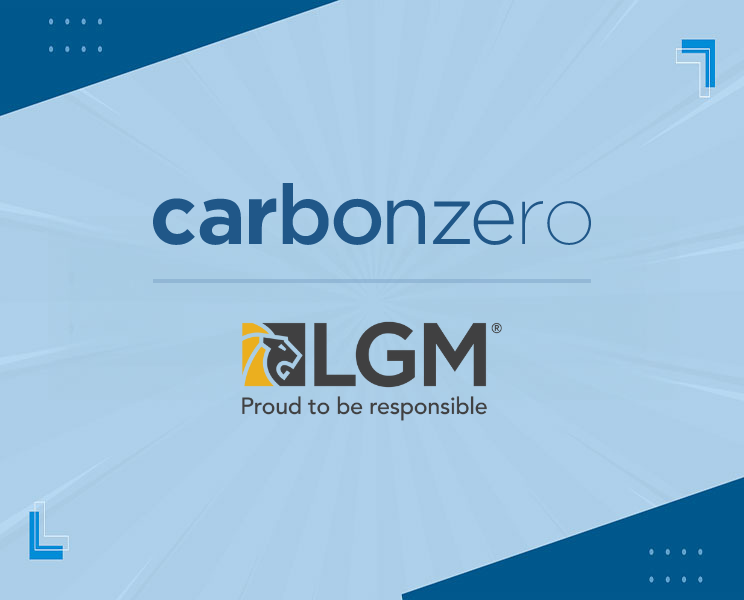As originally appeared in Canadian HR Reporter, September 10, 2024
Author: Sarah Dobson
As an HR leader, Cindy Brannan is all about taking a values-driven approach.
She realized that years ago when she joined a recruitment agency — having started a master’s in organizational management
“I quickly learned in the agency world that clients fall into those two categories,” she says, referring to people who see recruitment as a strategic partner versus those who treat it as a transactional service.
Relationships based on aligned values resonated with Brannan, who has been at LGM Financial Services for over 10 years and is now vice-president of people and culture.
“I’m passionate about finding the right people for their roles,” she says. “I am a champion of values.”
When the agency world’s increasingly sales-driven approach didn’t align with her personal values, Brannan decided to transition to an in-house HR role, which allowed her to see the long-term growth of new hires.
She became a talent acquisition specialist there in 2014, and the move was helped after she felt an immediate connection with the head of HR at LGM.
“We spent so much time talking to one another, and he… was very much aligned with my values,” she says.
Fast growth for FinTech company
In her time at LGM, Brannon has witnessed remarkable growth, particularly as the company transitioned into a FinTech space.
“We became a FinTech overnight,” she says, recalling how the company had to quickly hire around 50 people for its technology team.
The rapid expansion brought unique challenges, particularly in managing the cultural differences between long-term contractors and full-time employees.
“The contractors are making $85, $90 to $100 an hour… and then you’ve got your full-time employees, and you’re trying to keep a culture between them, in working well together,” Brannan says.
Balancing compensation disparities while fostering a cohesive team culture became a central focus during this period of growth, she says, and the CEO was impressive in responding to every single Glassdoor review.
Connecting during COVID
Another significant challenge came during the COVID-19 pandemic, when LGM had to shrink its workforce to 60% time due to the global chip shortage that severely impacted the automotive industry. However, Brannan and her team remained committed to employee engagement.
“We did a survey during that time… I think we got 85% for how we handled that piece of just getting people remote and then caring for people,” she says.
The company’s dedication to supporting staff during this period was evident in initiatives like one-to-one check-ins with every employee, where they sought to understand individual needs and concerns.
“Some of our employees were like, ‘Hey, we’re more fortunate, can we help the more junior people that are [struggling]?’” Brannan says, highlighting the camaraderie that emerged during the crisis.
Prioritizing employee engagement
Employee engagement continues to be a top priority for Brannan and her team. As the pandemic went on, she says employees started feeling over-surveyed, leading to a shift towards a simpler Employee Net Promoter Score (eNPS) model.
However, Brannan admits that this approach isn’t fully sufficient.
“It’s not really digging into anything… we’ve had some common themes,” she says, noting that they’ve since moved towards a more comprehensive system with Qualtrics to improve their listening capabilities.
“Our focus for this year is just really getting that up and running,” Brannan says.
Part of this effort includes addressing areas of improvement in manager effectiveness, identified through employee feedback. To support this, LGM is committing to regular one-to-one check-ins and providing Mental Health First Aid training for managers, she says.
“We see a couple things that say manager effectiveness [needs improvement] in certain areas. So, we want to fine-tune where those are, and then [look at] how do we provide the support.”
Social responsibility at LGM
Social responsibility is another area where LGM has made significant strides. The company initially set its sights on becoming a B Corp but realized that aligning with the United Nations Global Compact Network made more sense given their industry.
“The goal this year was to have a third of the organization take a course within the UN Global Compact Network,” Brannan says.
Courses on topics such as pay equity, gender equity, and artificial intelligence are now part of the company’s broader effort to weave social responsibility into its culture.
“Our employees all get four paid days for volunteer efforts and giving back,” she says, outlining the four pillars that guide LGM: profitable growth, social responsibility, engaged employees, and customer experience.
Focusing on DEI
Brannan is also passionate about diversity, equity, and inclusion (DEI), though she acknowledges there is still work to be done.
“We did the surveys to say, ‘Hey, do we have a problem?’ [but] our data is not sufficient or sophisticated enough to really measure people and put them into the buckets, so to speak,” she says.
Despite these challenges, gender diversity has become a key focus for the company, particularly in the automotive sector where men traditionally dominate leadership roles, says Brannan.
“We have almost an equal number of executives, male, female, and we’ve done our pay equity exercises, ensuring that there’s that across Canada.”
Avoiding burnout with company growth
Looking ahead, one of the biggest challenges LGM faces is managing growth while maintaining a strong values-driven culture, she says.
“We’re growing and we’re back at 100 per cent of plan, but we want to be very cautious in our growth,” Brannan says, highlighting the company’s entrepreneurial nature.
She says she is acutely aware of the potential for burnout in high-growth environments and is committed to ensuring that employees feel supported.
“I’m passionate that we need to keep focused on that values piece, and not burn out people,” she says, mentioning research by Gallup that found burnout is less about workload and more about how employees experience their work.
“Work doesn’t make people unhappy. It’s the workplace that does,” she says, pointing to factors like unfair treatment, unclear communication from management, and unrealistic time pressure as key contributors to employee dissatisfaction.
Finding balance with hybrid work
Finally, as hybrid work continues to evolve, LGM has sought to strike a balance between flexibility and in-person collaboration.
“We didn’t want to use the stick approach. We want to use the carrot approach of getting people back in the office and having them come together,” Brannan says.
However, the transition hasn’t been without challenges.
“People have gotten very comfortable at home, so then we’re saying, ‘Hey, one day a week,’ but we want more connection,” she adds.
“With the inflation costs, you look at the lower-paid employees, and they’ve had to move out further, and then are we penalizing them to force them back in the office? I think it’s [about] really caring about people and where they can be best performing.”


